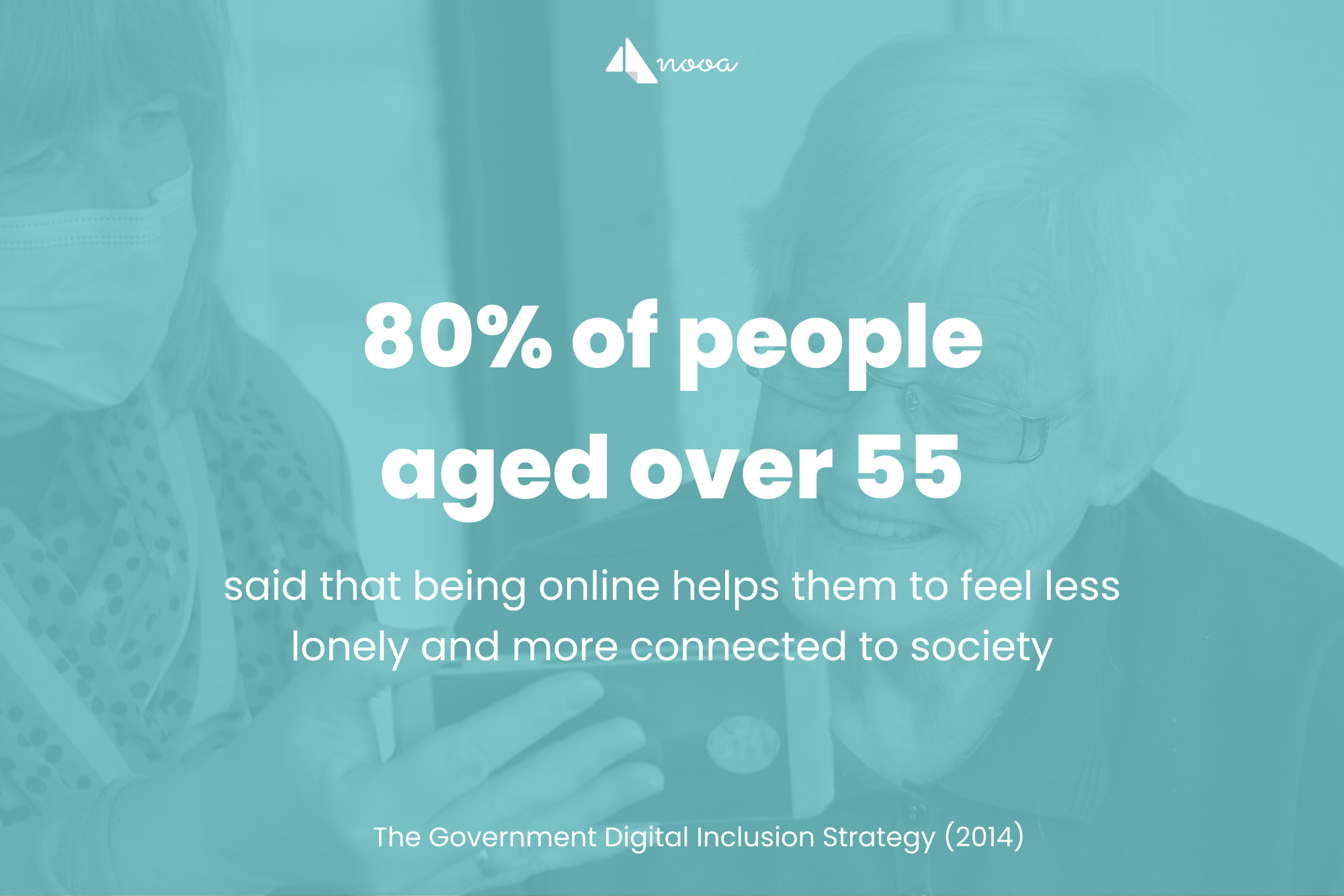Technology gives carers much-needed flexibility
Care is moving towards place-based working and multi-disciplinary or multi-agency teams. This is where technology steps in, enabling care workers to work seamlessly from multiple bases and multiple locations. By giving frontline staff access to mobile remote working solutions and information, they can spend more time with clients, reduce errors and speed up data capture and decision-making processes.
Collaboration tools such as instant messaging platforms, shared calendars, or videoconferencing tools, increase interconnectivity and flexibility so that care professionals can collaborate securely.
Digital channels allow clients to directly interact with care service providers
Over the past years, there has been a shift towards services being delivered to clients across multiple channels. Evidence has shown that this can help clients feel in control of their own care and provides accurate and up-to-date information which can save carers’ time. To make this happen, clients and their carers need to be able to interact through channels that work for them. Those channels can be instant messaging, online video conferencing or better use of email.
Services and information are becoming increasingly integrated
In the past, siloed systems prevented the sharing of information between different organisations. Improved communication across these organisations gives carers access to the information they need, when they need it. It also supports effective and timely transfers of care across care settings, which can be particularly problematic and time-consuming as phone calls and faxes are still often used, causing frequent errors and delays. Using mobile technology mitigates this as it enables quick access to information across the care system.
Using a number of digital tools and methods, care workers will spend less time navigating organisational processes and systems, and more time delivering better connected, and thus more effective and efficient, frontline care services. Savings can be made in both time and money, including significant savings in staff time, e.g. by not having to make multiple phone calls.
Key challenges
One of the main challenges is the limited availability of resources to implement new processes and solutions as well as financial pressure.
In addition, there is great uncertainty about what can and cannot be shared across partner organisations. This has worsened in the course of data privacy regulations such as GDPR.
Again, other organisations hesitate to adopt a new system in terms of system interoperability. They are not sure about which infrastructure they should implement as they do not want to put all their eggs in one basket.
What you can do to be prepared for the future
Leadership is needed to ensure the implementation of successful digital solutions. Contrary to common belief, no major investment of time, money and energy is needed to make things happen. However, it is important to make best use of those individual members of staff with drive and enthusiasm to lead projects.
A key task for management is to positively promote information sharing and collaboration between partners and colleagues. Additionally, they need to join up and align with partners.
It is also important to recognise that it is not the technology itself that makes for success. An equally important aspect is working collaboratively as teams and organisations at both an operational and strategic level and, of course, with clients.
Digital approaches in care will not be for everyone – but research has shown that clients who are ‘digitally aware’ experience better outcomes. The Government Digital Inclusion Strategy (2014) found that over 80 per cent of people aged over 55 said that being online helps them to feel less lonely and more connected to society.

Technology is no substitute for face-to-face interaction but it can support and assist with care delivery and maintain wellbeing. Care professionals have a critical role to play in this area and should not be afraid to get involved.
